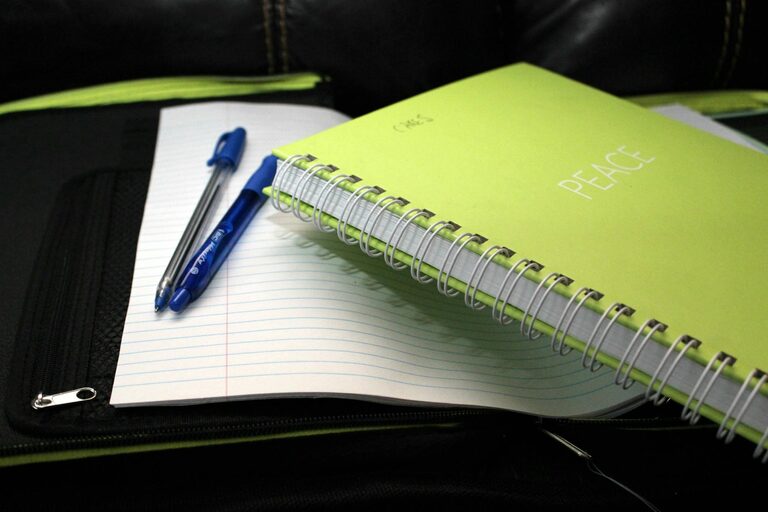Choosing the right notebook can make a big difference in how often you use it and how effective it is for your needs. Whether you want to jot down ideas, keep a journal, plan your day, or take notes in meetings, the perfect notebook is out there waiting for you. The trick is knowing what to look for.
In this post, we’ll walk you through practical tips to help you pick a notebook that you’ll actually enjoy using and carry with you regularly.
Why Choosing the Right Notebook Matters
Many people buy notebooks with good intentions but end up letting them sit unused. This usually happens because the notebook doesn’t feel quite right — maybe it’s too bulky, or the paper quality isn’t great, or the layout doesn’t fit your style.
Choosing the right notebook encourages consistent usage. When you like writing in it, feel comfortable carrying it around, and the format suits your tasks, it becomes a valuable tool rather than just another purchase.
Consider Your Purpose
Before browsing notebooks, think about what you’ll use it for. Different uses can require very different notebooks.
Common Notebook Purposes
– Journaling or personal writing: Look for something with quality paper that feels good to write on and a size that’s convenient for your lifestyle.
– Work or study notes: Durability and organization features like tabs or sections can be helpful.
– Creative sketching or drawing: Heavier weight paper that handles ink or paint without bleeding is best.
– Planning and to-do lists: A layout with grids, dots, or lines can assist with structure.
Choose the Right Size
Notebooks come in various sizes, from pocket-sized to large desk versions.
– Pocket notebooks (A6 or smaller): Great for quick notes on the go but may be too small for detailed writing.
– Medium notebooks (A5): Versatile and portable; many find this size perfect for balance between space and convenience.
– Large notebooks (A4 and above): Offer plenty of writing space but might be heavy to carry daily.
Consider how and where you’ll use the notebook to select a size that fits your needs without becoming a hassle.
Pick the Paper Type and Quality
Paper quality affects both your writing experience and how well the notebook holds up over time.
– Paper weight: Measure in grams per square meter (gsm). Higher gsm (80 or more) usually means thicker paper, reducing bleed-through.
– Paper finish: Smooth paper is great for ballpoint pens and markers, while textured paper suits pencils and charcoal well.
– Ruled, dotted, or blank: Choose based on your writing or drawing preferences. Dotted notebooks are popular for bullet journaling because they offer flexibility without the distraction of solid lines.
Factor in Binding and Durability
How a notebook is bound impacts both aesthetics and longevity.
– Spiral-bound: Easy to flip and lie flat; convenient for note-taking but may wear out faster.
– Perfect bound (like a book): Sleek look but may not open flat.
– Hardcover: Protects the pages better and lasts longer.
– Softcover: Lightweight and flexible but less durable.
If you plan to carry your notebook everywhere, a hardcover with sturdy binding is worth the investment.
Additional Features to Look For
You might want to consider some extra elements that enhance usability:
– Bookmarks or elastic closures: Helpful for keeping track of important pages and preventing damage.
– Pocket folders inside covers: Useful for storing loose papers or small notes.
– Numbered pages and index: Makes organizing and referencing easier.
– Perforated pages: Allow you to tear out notes cleanly.
These little touches can significantly improve your overall experience.
Think About Your Writing Instruments
If you have preferred pens or pencils, make sure the notebook works well with them. Some inexpensive notebooks have thin paper that fades or bleeds, frustrating your efforts. Testing samples or checking online reviews can help you avoid this.
Set a Budget That Matches Your Expectations
It’s tempting to save money, but a cheap notebook that doesn’t feel good to use can end up wasting more time and money in the long run. Decide on a comfortable price range that still gets you decent quality.
There are affordable options with great reviews, so do some research and try different brands to find the best value.
Try Before You Buy
Whenever possible, visit a store and flip through different notebooks. Hold them, open the pages, and imagine using them in your daily routine.
If you order online, consider purchasing a few different types in smaller sizes first. This way, you’ll find what suits you best without committing to a large, expensive notebook.
Care and Maintenance Tips
Once you have your perfect notebook, take care of it:
– Keep it in a protective case or bag when carrying.
– Store in a dry place to avoid wrinkled or stained pages.
– Regularly review and organize your notes to keep them useful.
Final Thoughts
Choosing a notebook that you’ll actually use is all about understanding your personal preferences and needs. Focus on size, paper quality, intended use, and features that match your lifestyle.
When you invest a little time upfront, your notebook can become an inspiring daily companion—something you look forward to opening, writing in, and relying on every day.
Happy writing!

